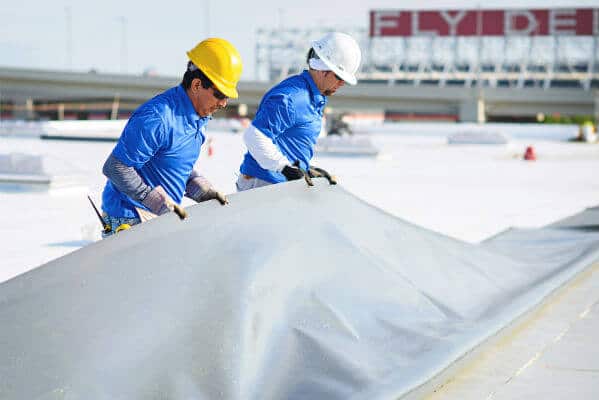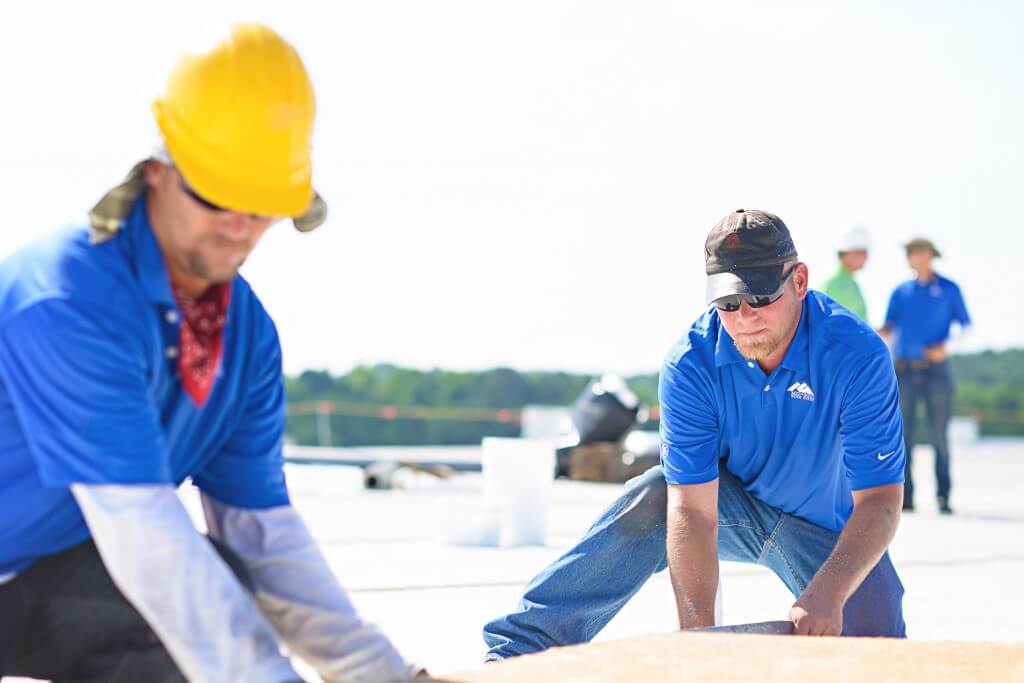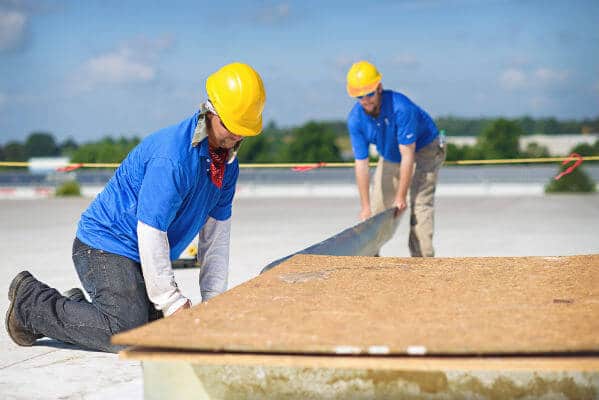Different Materials for Different Roofs: Know Your Options


When it’s time to upgrade your roof, there are three primary options: TPO, PVC and EPDM. No, that’s not the third line down in that test that they give you at the eye doctor’s office.
The Evolution of Roofing
Knowing the difference between those jumbles of letters is crucial to making sure the roof you purchase is right for your building, your budget, and the future of your structure.
All three are similar in that they are all single ply. Throughout most of the history of the industry, roofs were multiple ply. The familiar hot-tar-and-gravel roofs, for example, were three or four layers thick.
In the 1970s, roofs made of just one layer of sheeting came onto the scene—and they continue to dominate the industry to this day. Generally, single-ply roofs come in three different levels of thickness: 45 mils, 60 mils, and 80-90 mils.
TPO
The vast majority of commercial roofs are made of thermoplastic polyolefin, or TPO. TPO is a thin, white, gray, or tan plastic membrane that reflects a significant portion of the sun’s heat and energy. Place your hand on a TPO surface while working on a roof on a hot day and it’s comfortably warm but not hot. Stick your hand on one of its black predecessors and you’ll learn how efficiently you can drive yourself to the hospital with a mangled hand.
Another key factor in TPO’s popularity is the use of hot air welders to weld the sheets together, creating one single, homogenous layer. These welded seams hold up well over time.
PVC
Also a white, thermoplastic membrane, polyvinyl chloride—or PVC—is typically more expensive than a comparable TPO. PVC is resistant to chemicals, and is a sensible choice for buildings whose tenants will be working with significant amounts of chemical compounds. PVC has been around for a longer period of time, and its established track record is attractive to owners who may be unsure of TPO’s resistance to time, weather, and wear. Although it costs roughly 25 percent more than a comparable TPO, it has a longer track record.
EPDM
Ethylene propylene diene monomer—or EPDM—is a black synthetic rubber. One of the first single-ply materials ever to come to market, you know EPDM as the stretchy, black material that makes up the inner tube of your bicycle tires. Although it was a pioneering roofing material, a combination of increased awareness about energy consciousness and the reduced cost of TPO have combined in recent years to knock EPDM off its perch in the overall market.
This, however, is not true in the Northeast. Not only is the climate there more hospitable to EPDM roofs, the use of the material has been entrenched for so long that building owners often don’t consider other options.
When white thermoplastics first came out, they were new and, therefore, expensive, but TPO has been around for 15 years and is now roughly 25 percent less expensive than a comparable EPDM roof. Cost, however, is not the only consideration. Know your roof, know your structure, and talk with your contractor.
LIKE WHAT YOU JUST READ?
Sign up for our newsletter to get fresh articles, updates and more!
Assess, Report and Decide: Get to Know Your New Building’s Roof
If you’re considering buying a new building, the very first item on your list should be to get an assessment of the roof’s condition. This analysis can prevent surprises down the line and—if the roof needs work—it can have a dramatic effect on the price you wind up paying for the building.
Why You Need A Roofer Onsite When You Install Your HVAC System
It’s common to place the heating, ventilating and air conditioning (HVAC) systems for large buildings on the roof. A successful rooftop HVAC installation usually involves the collaboration of an entire team of workers, so that issues related to the roof, structures, electrical and HVAC can be discussed beforehand. If an HVAC system is not coordinated…


